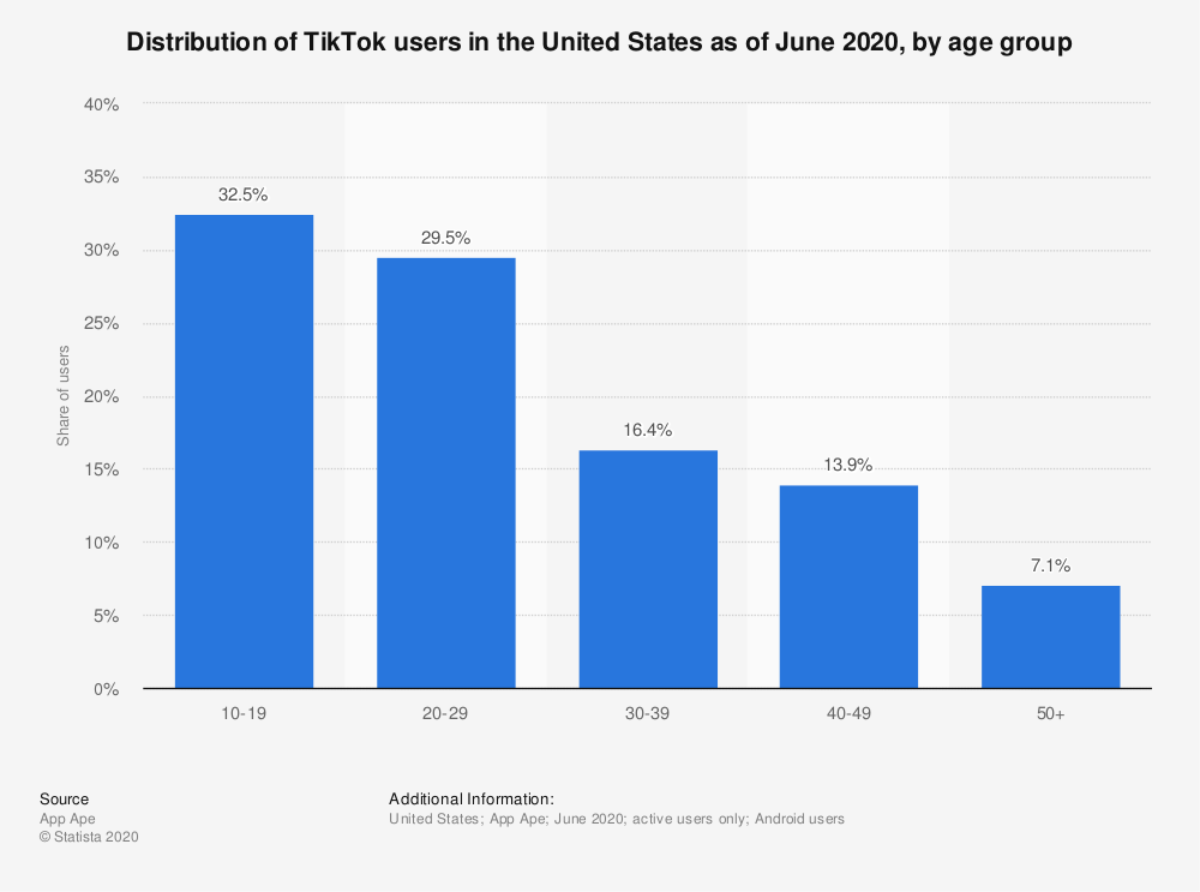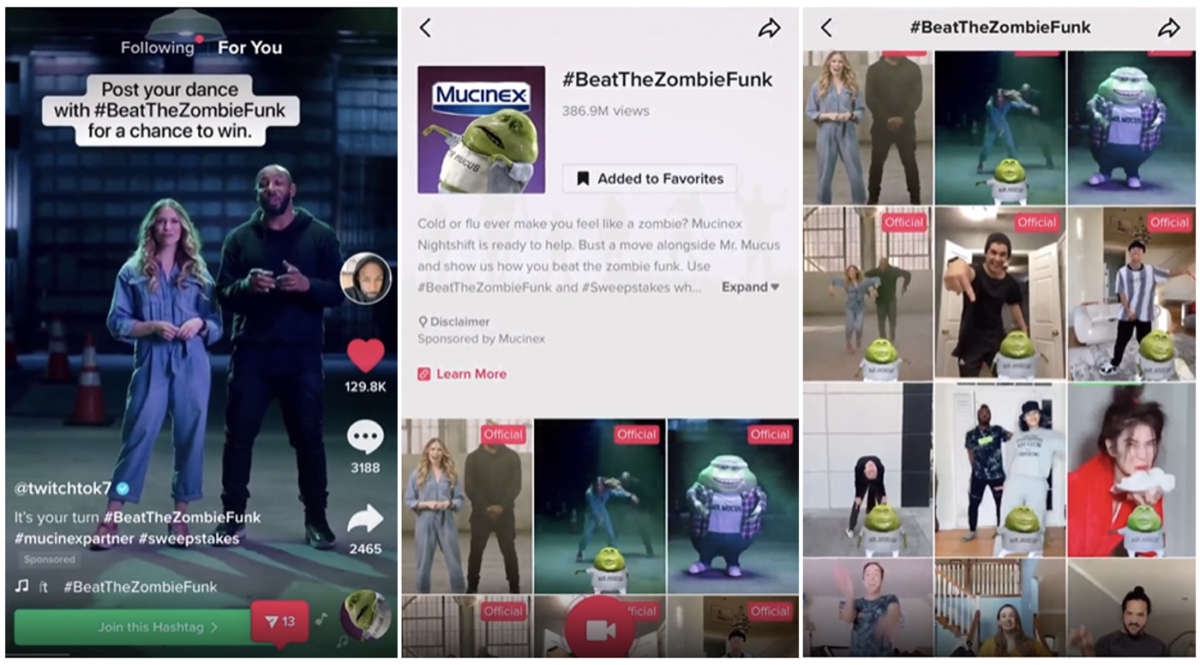
Take on TikTok
Five Things to Know Before Your Brand Starts Posting On 2021’s Buzziest Platform

TikTok became a household name practically overnight, navigating through news headlines and ramping up advertising efforts to bring connection and joy to people spending more time at home in the early days of lockdown. The app has 1 billion users worldwide and since 2018 its number of monthly active users has grown nearly 800%, now at 100 million per month in the U.S [source]. The platform has quickly caught the attention of consumers, advertisers, and the likes of Instagram and Snapchat. But if you aren’t currently a user, or you’re a brand trying to understand how to navigate the platform, it can be daunting to get started. So we’ve rounded up five key considerations for brands that want to learn how it works and what to keep in mind when it comes to the TikTok community.
Designed to fuel expression and help every creator shine
As a platform that inspires people to find joy through quick videos, TikTok is a place where every user is encouraged to be a creator by using music and movement, adding their own spin to viral trends. What makes TikTok unlike any other social platform is that it meets the core psychological needs of all humans – to be known, to be seen, and to be heard – on a massive scale. No matter how long you’ve been on the platform or how many followers you have, the algorithm continuously pushes everyone’s posted content into other users’ feeds to ensure you are seen by the masses. Brands can benefit from this algorithm by consistently posting content focused on lighthearted expression without the typical branded look. Collaborating with creators is a great way for brands to integrate in the community. TikTok’s inclusivity has fostered a space that celebrates individuality and gives people and brands undeniable reasons to join in, whether it be to participate in trends or hashtag challenges, or to share raw real-life moments.
Content discovery made easy
TikTok does all the legwork to bring you the content you love without making you look for it. The ‘For You’ feed algorithm is responsible for constantly learning what you like and don’t like based on several factors including videos you like or share, accounts you follow, comments you post, and content you create. As soon as you open the app, the For You feed delivers an endless lineup of videos that align with the type of content you enjoy. All you have to do is watch, scroll, and engage. Sponsored in-feed videos allow brands to reach users with relevant interests while in this immersive state and give the option to further explore through a brand landing page. This steady stream of personalized content allows TikTok and brands to captivate users and generate video views and engagements. No need to worry about follower counts for people to see your content.
It’s not just for Gen Z anymore
According to eMarketer, TikTok total unique visitors in the United States increased by 93.2% from October 2019 to March 2020. An app that started out with a primarily Gen Z audience quickly became multigenerational as people started spending more time at home, connecting with loved ones near and far by creating and sharing TikTok videos. Research by Statista shows that while the 10-19 age group continues to hold the largest percentage of users at 32.5%, the usage of all other age groups combined (ages 20+) makes up 67% of TikTok’s audience. TikTok’s multigenerational user base provides opportunity for any marketer to reach their target age demographic.

Source: Statista, June 2020
Connect with the TikTok community
Authenticity and inclusivity reign supreme on TikTok – in content, community, conversation, and composition. Any “normal” brand post used on other social platforms will feel out of place on TikTok. The approach must be less polished, more genuine, and incorporate these 4 Cs.
- Content: Create vertical videos that are 15 seconds or less, shot on a phone, and offer a homemade feel for optimal performance. Avoid using high quality or widescreen/square videos on TikTok. It’s like fitting a square peg into a round hole – it just doesn’t work.
- Community: Post new content daily to keep up with the fast-paced nature of the TikTok algorithm. The more video posts, the more opportunities for the content to blow up with views, likes, and comments.
- Conversation: Incorporate videos that participate in TikTok trends – music, skits, jokes, dances – to drive brand exposure and viewership. Videos that align with what’s trending will be boosted by TikTok’s algorithm, not to mention secure an added “cool” factor for the brand.
- Composition: Integrate music into each post to fuel inspiration and invite people to engage with the brand. Brands can source music from the Commercial Music Library, a pool of royalty-free music that can be used for promotional content. At an additional cost, the brand can license trending songs for commercial use or create custom sounds and music.
Virality is a #Challenge
The most buzzworthy of all advertising opportunities for brands on TikTok are hashtag challenges. With challenges, brands can build awareness and engagement on a massive scale. Many brands leverage TikTok influencers to help position the brand message in a lighthearted and authentic way, giving users music and instructions while still encouraging them to put their own spin on things.
- Mucinex’s #BeatTheZombieFunk challenge showcases the power of utilizing influencers to spark participation. The hashtag garnered 500K+ user generated videos and 5.8 billion video views, and led to significant lifts in ad recall, purchase intent, and brand favorability.
- ASOS saw success with their #AySauceChallenge, partnering with popular creators to invite the community to share their three best outfits through a series of outfit changes. The initiative drove increased aided brand awareness, ad recall, and brand association with being “trendy” thanks to the 488K+ videos created and 1.2 billion video views in just six days.
- Chipotle ran a #GuacDance challenge to surround National Avocado Day, urging fans to showcase their passion for guacamole in the form of a dance. This prompted 250,000 user-generated videos, 430 million video views, and the biggest guacamole sales day in Chipotle history. 800,000 sides of guac. 420,000 pounds of avocados.

Source: Mucinex #BeatTheZombieFunk Challenge
TikTok brings a secret sauce that is hard to replicate thanks to its ‘For You’ feed algorithm, a community rooted in authenticity, and opportunities for brands to go viral. It has caught the attention of Instagram and Snapchat, causing a flurry of changes to those platforms in response including new video formats, more robust in-app video editing tools, and the ability to choose songs from a music library to add into posts. Instagram even rolled out a new product as an attempt to clone TikToks – Instagram Reels. While other platforms continue to work hard to lure users away from TikTok, the largest barrier still stands: these platforms weren’t built for all people to be seen as their authentic selves on a large scale. Instagram was built to be a highly curated place for people to showcase the highlight reel of their lives and requires users to have a ton of followers and engagement to be seen at scale. Snapchat was built as an intimate place for people to send disappearing videos or photos to only their selected friends, which inherently prevents people from being seen by the masses. Until these platforms can break through this fundamental barrier, TikTok will continue to draw more attention from users and brands alike.
